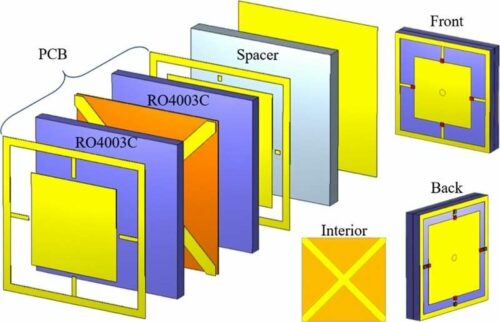Researchers at Johns Hopkins University have created a compact reflective surface, revolutionizing urban communication with superior electromagnetic signal control.

Urban landscapes often challenge communication signals. As a radio wave journeys from a mobile device to a router, then to a cell tower and finally to its intended receiver, it ricochets off walls, buildings, and various obstructions. Each collision with a barrier disperses the radio wave, weakening the signal. This consequently shrinks the available bandwidth. Concurrently, this signal vies for bandwidth with many other nearby devices, limiting the data it can convey.
Researchers at Johns Hopkins University have developed an innovative compact and lightweight reflective surface that has the potential to transform communications in densely populated areas, offering unparalleled management of electromagnetic signals, including radio waves. Engineers historically used repeaters to boost communication signals and bypass obstacles. As this technology hits its limit, attention turns to altering the signal with reconfigurable intelligent surfaces (RIS).
Harnessing both magnitude and phase
The team meticulously analyzed a two-layer metasurface, incorporating patch elements, control dials, varactor diodes, and resistors to enhance control over essential parameters. This intricate design birthed a versatile cascaded metasurface capable of independently managing magnitude and phase, all compactly fitted on an economical printed circuit board. The updated material corrects metasurfaces’ inconsistent signal loss using two resonant materials. This compact, lightweight metasurface offers advanced electromagnetic control and can be placed around a city to boost cell or Wi-Fi signals.
Reducing power requirements through reflection
Traditional repeaters retransmit signals using power-intensive methods and bulky equipment, often involving antennas or arrays of multiple antennas. In contrast, the team’s dynamic cascaded metasurfaces enhance signals by bouncing them off patterned surfaces. The researchers believe this technology could operate on something as simple as a nine-volt battery.
Other potential technology applications
Controlling electromagnetic waves’ magnitude and phase has vast applications beyond telecommunications. Dynamic metasurfaces could lead to compact, energy-efficient sensors. The researchers believe widespread interest in the technology is promising, and they are eager to expand its uses.
Reference: Timothy Sleasman et al, Dual-Resonance Dynamic Metasurface for Independent Magnitude and Phase Modulation, Physical Review Applied (2023). DOI: 10.1103/PhysRevApplied.20.014004








